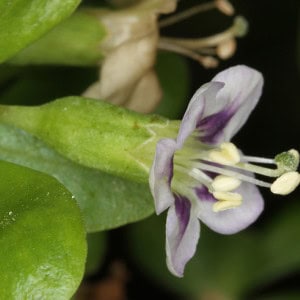Boxthorn
Boxthorn (Lycium ferocissimum) is a significant invasive species in New Zealand, posing ecological, economic, and social challenges. Effective management strategies, which include research, and community engagement, are crucial for mitigating its impact and protecting native ecosystems as well as the livelihoods of potato growers.
Increasing awareness among landowners, farmers, and the public about the negative impacts of Boxthorn and other invasive species is essential for effective management
Boxthorn has been identified as a major host (including an over wintering habitat) for the Tomato Potato Psyllid (and associated bacterium). The psyllid transmits a bacterial disease that causes a symptom known as Zebra Chip disease. This insect pest (associated bacterium) is having a huge financial impact on potato production throughout New Zealand, due to the damage it causes to potato crops.
The estimated costs of this pest and disease alone to the potato industry are around $M15 per annum. Potatoes New Zealand (the organization that represents all New Zealand potato growers and industry) would like to highlight this issue to farmers and landowners and encourage them firstly not to plant African Boxthorn as a hedging species and secondly where possible to remove the boxthorn infestations from their property.
What does it look like?
Boxthorn is a densely branched, erect, evergreen shrub that grows to 6 m tall. It has tough, woody stems alternately branched at square angles, forming a box-like pattern, and with rigid spines. Hairless, fleshy, bright green leaves (40 x 12 mm) are narrow, oblong, and clustered along the stems. White to pale mauve flowers (10-13 mm) produced from July to March, followed by tear shaped orange red berries (5-12 mm) in autumn.

Why is it a problem?
Boxthorn is weedy as it forms dense, tall, long-lived stands, excluding most other vegetation. It tolerates a wide variety of soil types (sand to rocky cliffs), drought, salt, wind, and hot to cold temperatures. Poisonous (usually not grazed). It aggressively colonises high light areas, particularly sand dunes, estuary margins, other coast areas, and limits access for recreation.
Boxthorn was introduced to New Zealand in the early 19th century, likely for hedging and erosion control purposes. However, it quickly spread and established itself in a variety of habitats, including coastal areas, scrublands, riverbanks, and disturbed sites.
Boxthorn is highly invasive in New Zealand, forming dense thickets that outcompete native vegetation, alter ecosystems, and reduce biodiversity. Its rapid spread is facilitated by its ability to produce abundant seeds, which are dispersed by birds and mammals.
Control Measures
Various control methods are employed to manage Boxthorn infestations in New Zealand. These may include mechanical methods such as cutting, pulling, and grubbing, as well as chemical control using herbicides.


More information
Please talk with Potatoes New Zealand if you have any questions on Boxthorn, email info@potatoesnz.co.nz or phone 0800 399 674.



